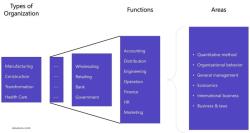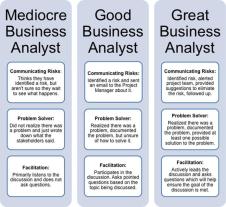How to write a formal proposal?
Writing a professional formal proposal involves a structured and well-organized approach to present your ideas, plans, or solutions to a potential client, business partner, or organization. Here are step-by-step instructions on how to write a formal proposal:
1. Understand the Requirements:
- Before you start writing, make sure you thoroughly understand the requirements and expectations of the proposal. What is the purpose of the proposal? What are the specific needs or problems it should address? Who is the target audience?
2. Research and Gather Information:
- Collect all the necessary information related to the proposal, including data, statistics, and background information. The more informed you are, the stronger your proposal will be.
3. Define the Problem or Opportunity:
- Clearly define the problem or opportunity that your proposal aims to address. Be specific about the challenges or issues that need to be resolved.
4. Develop a Clear Objective:
- State the main objective or goal of your proposal. What do you intend to achieve with your proposal? Make your objective measurable and achievable.
5. Create an Executive Summary:
- Start your proposal with an executive summary that provides a brief overview of the proposal's key points, objectives, and expected outcomes. This section should grab the reader's attention and summarize the proposal concisely.
6. Outline the Proposal:
- Create a detailed outline or table of contents for your proposal. This will serve as a roadmap and help you organize your thoughts and content effectively.
7. Write the Introduction:
- In the introduction, provide background information, explain the context of the proposal, and highlight the significance of the problem or opportunity. State your purpose and objectives clearly.
8. Present Your Solution or Plan:
- This is the core of your proposal. Explain in detail how you plan to address the problem or seize the opportunity. Use clear and logical arguments, supported by evidence and data, to make your case. Include any technical details, methodologies, or strategies as needed.
9. Highlight Benefits and Outcomes:
- Describe the benefits and expected outcomes of your proposal. Explain how your solution will address the problem or take advantage of the opportunity. Use persuasive language to emphasize the positive impact.
10. Provide a Timeline or Schedule:- If your proposal involves a project or implementation plan, include a timeline or schedule that outlines key milestones and deadlines. This helps the reader understand the proposed timeline.
11. Address Potential Concerns:- Acknowledge any potential concerns or objections the reader may have and address them proactively. This demonstrates your preparedness and commitment to finding solutions.
12. Include Supporting Documentation:- If necessary, attach supporting documentation, such as research findings, case studies, testimonials, or references, to bolster your proposal's credibility.
13. Outline the Budget:- If your proposal involves financial aspects, provide a clear and detailed budget section. Include cost estimates, funding sources, and a breakdown of expenses.
14. Summarize and Conclude:- In the conclusion, summarize the key points of your proposal and restate its benefits and outcomes. Encourage the reader to take action or make a decision.
15. Add Appendices and Attachments:- If you have additional materials, charts, graphs, or supplementary information, include them in appendices or as attachments for reference.
16. Proofread and Edit:- Review your proposal for grammar, spelling, punctuation, and clarity. Ensure that it follows any specific formatting or style guidelines.
17. Seek Feedback:- Before finalizing your proposal, seek feedback from colleagues, mentors, or peers. They can provide valuable insights and suggestions for improvement.
18. Submit the Proposal:- Follow the submission instructions provided by the recipient. Ensure that you meet all deadlines and requirements for submission.
19. Follow Up:- After submitting the proposal, follow up with the recipient to confirm receipt and inquire about their timeline for a decision.
Writing a formal proposal is a meticulous process that requires attention to detail and effective communication. Tailor your proposal to the specific needs and expectations of your audience, and be prepared to adapt your approach based on their feedback or requests for revisions.
Crafting a Formal Proposal: Steps and Guidelines for Success
A formal proposal is a document that is used to persuade a potential client or customer to accept your offer. It is important to write a well-crafted proposal that is clear, concise, and persuasive.
Here are some steps and guidelines for crafting a successful formal proposal:
- Understand your audience. Who is your proposal for? What are their needs and wants? Once you understand your audience, you can tailor your proposal to their specific needs.
- Define your goals. What do you want to achieve with your proposal? Do you want to sell a product or service? Get a new client? Secure a grant? Once you know your goals, you can focus your proposal accordingly.
- Do your research. Learn as much as you can about the potential client or customer and their industry. This will help you to write a proposal that is relevant and informative.
- Write a strong introduction. The introduction of your proposal should grab the reader's attention and introduce the topic of your proposal. It should also be clear and concise.
- State your problem or opportunity. What problem are you solving for the potential client or customer? What opportunity are you offering them? Be specific and clear in your explanation.
- Propose your solution. How will you solve the problem or capitalize on the opportunity? Be detailed and specific in your explanation.
- Highlight your benefits. What are the benefits of your solution? How will it help the potential client or customer? Be clear and concise in your explanation.
- Include a call to action. Tell the reader what you want them to do next. Do you want them to sign a contract? Schedule a meeting? Contact you for more information? Be clear and specific.
- Proofread carefully. Before you submit your proposal, be sure to proofread it carefully for any errors in grammar or spelling. You should also have someone else proofread it for you.
The Art of Writing a Professional Proposal: Best Practices
Here are some best practices for writing a professional proposal:
- Be clear and concise. Avoid using jargon or technical language that your audience may not understand.
- Be specific. Don't just say that your solution is the best. Explain why it is the best and how it will benefit your audience.
- Be persuasive. Use strong language to convince your audience that your solution is the right one for them.
- Be professional. Your proposal should be well-written and free of errors.
Winning Over Decision-Makers: How to Create a Formal Proposal
To win over decision-makers, your proposal should be tailored to their specific needs and interests. It should also be clear, concise, and persuasive.
Here are some tips for creating a formal proposal that will win over decision-makers:
- Understand the decision-maker's needs and priorities. What are they trying to achieve? What are their challenges? Once you understand their needs, you can tailor your proposal accordingly.
- Highlight how your solution will help the decision-maker achieve their goals and overcome their challenges. Be specific and clear in your explanation.
- Use data and evidence to support your claims. This will show the decision-maker that your solution is viable and effective.
- Proofread your proposal carefully for any errors in grammar or spelling. You should also have someone else proofread it for you.
By following these steps and guidelines, you can craft a formal proposal that is clear, concise, persuasive, and likely to win over decision-makers.












